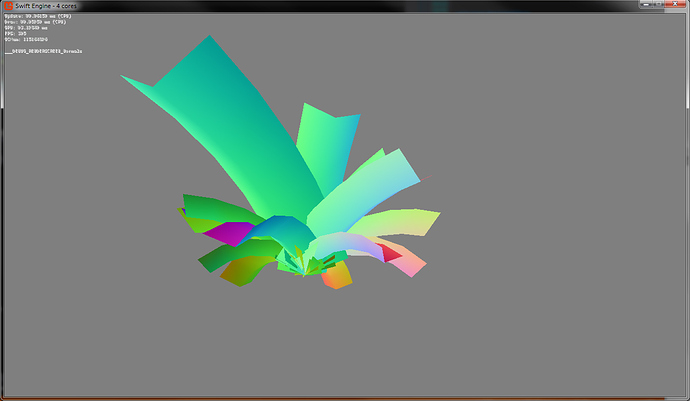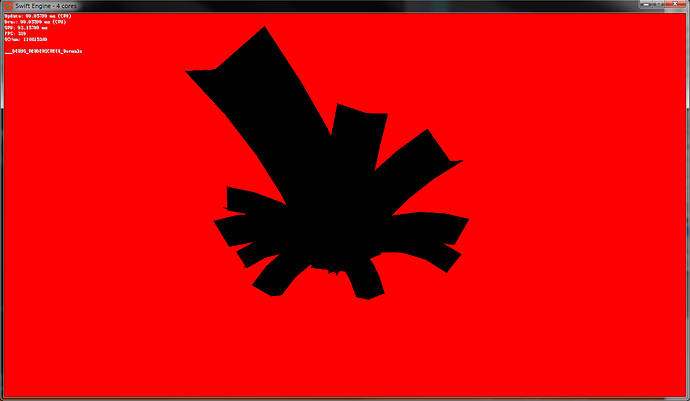Hi !
I’m using MRT and a custom processor to draw my models. (Using a GBuffer)
I’m drawing to 4 RenderTargets: (using device.DrawUserIndexedPrimitives instead of a spritebatch if it matters)
It curiously shows only depth as if it was 0 or 1, nothing in between…
float4 worldPosition = mul(input.Position, World);
output.Depth.x = output.Position.z;
output.Depth.y = output.Position.w;
The creation of the RenderTargets:
_RT_Color = new RenderTarget2D(GraphicsDevice, _BackbufferWidth, _BackbufferHeight, false, SurfaceFormat.Color, DepthFormat.Depth24Stencil8);
_RT_Normal = new RenderTarget2D(GraphicsDevice, _BackbufferWidth, _BackbufferHeight, false, SurfaceFormat.Color, DepthFormat.None);
_RT_Depth = new RenderTarget2D(GraphicsDevice, _BackbufferWidth, _BackbufferHeight, false, SurfaceFormat.Single, DepthFormat.None);
_RT_BlackMask = new RenderTarget2D(GraphicsDevice, _BackbufferWidth, _BackbufferHeight, false, SurfaceFormat.Color, DepthFormat.None);
But when I’m drawing each of the RenderTarget to see what was drawn in each, only the Normals are ok.
_RT_Color is black whatever I try:
PixelShaderOutput output = (PixelShaderOutput)0;
output.Color = float4(1.0f, 0.5f, 0.7f, 0.5f); return output; //Force to return and don't execute the remaining code
Here are the structs (Are these semantic ok ?)
struct VertexShaderInput
{
float4 Position : POSITION;
float3 Normal : NORMAL0;
float2 TexCoord : TEXCOORD0;
float3 Binormal : BINORMAL0;
float3 Tangent : TANGENT0;
};
struct VertexShaderOutput
{
float4 Position : SV_POSITION;
float2 TexCoord : TEXCOORD0;
float2 Depth : TEXCOORD1;
float3x3 tangentToWorld : TEXCOORD2;
float3 ViewDirection : TANGENT0;
}
struct PixelShaderOutput
{
float4 Color : SV_TARGET0; //COLORx instead ?;
float4 Normal : SV_TARGET1;
float4 Depth : SV_TARGET2;
float4 SunRays : SV_TARGET3;
}




